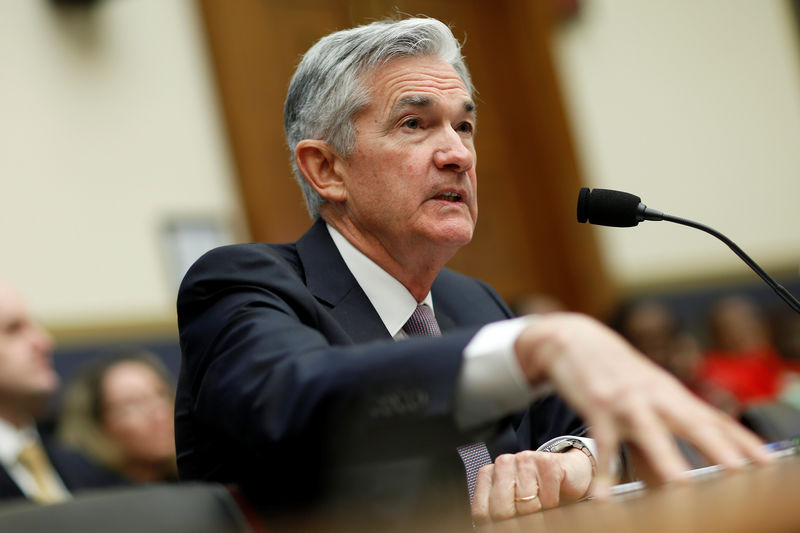Investing.com - As Federal Reserve chairman Jerome Powell emphasized the need for gradual rate hikes in the U.S. on Tuesday, markets left forecasts unchanged for the future path of monetary policy, predicting a further two increases this year.
After Powell’s semiannual monetary policy report to Congress, odds for the next Fed hike in September were virtually unchanged at 89%, according to Investing.com’s Fed Rate Monitor Tool.
Fed fund futures priced in the probability of a second hike in December at nearly 65%, up slightly from the odds earlier in the day.
Powell emphasized that it was appropriate to follow the central bank’s current plan to gradually increase interest rates.
“With a strong job market, inflation close to our objective, and the risks to the outlook roughly balanced, the FOMC believes that--for now--the best way forward is to keep gradually raising the federal funds rate,” Powell said.
While once again emphasizing his upbeat outlook for the economy with a strong jobs market and the Fed’s belief that inflation will remain near the 2% target for several years, Powell admitted that trade uncertainty complicated the outlook.
He explained that financial conditions remained favorable to growth, that a stronger financial system was in a good position to meet the credit needs of households and businesses, tax and spending policies would likely continue to support the expansion and the outlook for economic growth abroad remains solid despite greater uncertainties in several parts of the world.
However, he admitted that “it is difficult to predict the ultimate outcome of current discussions over trade policy as well as the size and timing of the economic effects of the recent changes in fiscal policy.”
With the Fed closely monitoring wage inflation for evidence of diminishing slack in the labor market and upward pressure on inflation, Powell admitted that increases have not been as rapid as prior to the crisis.
“Wages are growing a little faster than they did a few years ago. That said, they still are not rising as fast as in the years before the crisis,” he stated.
Powell attributed the fact to lack of growth in productivity and said that the only way wage growth can go up is by productivity growth.
The Fed chief stressed the need for the central bank to monitor a wide range of relevant information when deciding what monetary policy will be appropriate.
“As always, our actions will depend on the economic outlook, which may change as we receive new data,” he warned.
